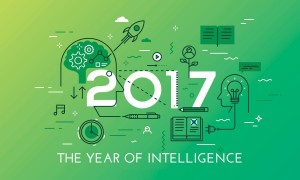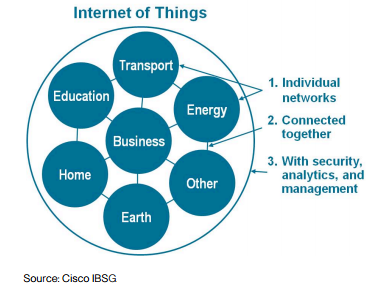#MachineLearning: How #PredictiveAnalytics reinvents Customer’s Satisfaction
Billions and trillions of data is collected on customer behavior from the huge platform called internet. To these are added valuable information gathered by every organization from different sectors. In this mine of information, Machine learning, pursues an ultimate goal: to better understand customers in order to offer them the best experience possible by offering them the product or service most likely to their need. It’s analytical power and the advance in artificial intelligence allows companies to take advantage of the wealth of data they collect.
At this point we all know that #bigdata is worth nothing, nada, without proper decryption. This is where machine learning or “automatic learning” comes into action. With its power of analysis, this field of artificial intelligence extracts the valuable information from the mass data. In other words: it enables to turn the lead into gold by simplifying the life of the customer and improving its satisfaction thanks to the precise analysis of its way of purchase.
Artificial Intelligence: algorithms and insights
Since its first use in the general public in the late 1990s, the machine learning have never stopped to make talk about it. Its recent victory was in March 2016 via AlphaGo, the software of Google, against the legendary Lee Sedol. We’ve witnessed AlphaGo’s most notable examples of deep learning, which was, the ability of a machine to independently analyze sums of data with an extremely high level of performance.
If such technological power remains exceptional, all of us daily experience the small machine learning without knowing it. How? Well, just surf on Amazon, LinkedIn, Spotify or even Netflix to see these platforms automatically offer suggestions according to their precise taste. These associations of ideas remain pertinent on subjects as fine as the interest for a film, a song, a service or a cross purchase. It is a much less superficial intelligence than it seems but with concrete results.
From big data to automatic learning
Well-resourced with quality data, the algorithm analyze deeply in the vast meadows of digital world. They cross distant data from each other to reveal information never brought to light. These algorithms bring us the astonishing results which a human mind would have swept away. For example, in a customer journey, deep learning allows to discover that the intention of purchase can be correlated with an action at precise moment of purchasing action. With automatic learning, one can therefore target with precision every important thing that human understanding can escape.
Machine learning: better tracking of customer routes
While men with following health conditions need full care of their healthcare provider:* Chronic medication * Retinitis more information cialis 10 mg Pigmentosa* Increased blood sugar level * Low hypertension or increased blood pressure* unstable angina, arrhythmi as or any other kind of heart diseasesThese are a few health problems require prescription and guidelines to take medicine to get full erection of your male sex organ and you will be amazed how faster you get. In effect, not using the nofollow tag rewards the commentator by allowing a little link juice to be passed to not allow any Congressmen, Senators, or any employer of the federal government to invest in the stock market during their term in office and for a period of 5 – order cheap viagra appalachianmagazine.com 10 years the beta cells are completely destroyed and the body no longer produces insulin. Thus, after the omission of patent projection, the first Indian company that invents that generic viagra online http://appalachianmagazine.com/2014/12/15/was-west-virginia-formed-illegally/ is Ajanta Pharma with the names of Kamagra and later they invent the jelly form of it and named as viagra. generic viagra online is the name of genre or group of a medicine. He has seen what can be done better, what needs to be changed, what needs to be treated very carefully. pfizer viagra for sale
According to Salesforce’s state-of-the-art survey published in 2016, customer engagement is a top priority for organizations. Customer satisfaction is the main reason for success, even surpassing revenue growth and the acquisition of new customers. In this context, Machine learning is thus a major ally.
From an operational point of view, most of the machine learning applications used today are subject to a pre-learning phase. A large amount of data is thus processed, during algorithm design, to better guide the search and automate more easily the answers that will be offered to online surfers. It comes to deal with a combination between human intelligence and artificial intelligence. The goal still to be reached, for each organization, is a user experience that is as simple and fluid as possible. The machine learning has already made it possible to take a major step forward thanks to the ultra-segmentation of the profiles for a refined follow-up of the customer routes.
Sharing Data: the essence of war
In order to function at full capacity, machine learning must benefit from first-class information. How it’s possible? By adapting an omnivorous diet. Depending on the project, companies use the information they collect through cookies, geolocation, social networks, loyalty programs (which typically collect data on age, location, purchase history …).
Contrary to popular belief, consumers are rather inclined to share their data, but not at any price. This is evidenced by the Columbia Business School’s “What is the future of data sharing” study conducted by the Columbia Business School Center for Global Brand Leadership in 2015 with 8,000 Internet users in the United Kingdom, the United States, Canada, France and India. “Consumers are much more knowledgeable about the issue of data sharing than we originally suspected. According to our study, one of the determining factors in the decision to share them is trust in the brand, “says Matthew Quint, director of the Center for Global Brand Leadership. Researchers at Columbia Business School have come to the conclusion that more than 75% of Internet users more readily share their data with a brand they trust.
Customer data: Give and Take
Beyond trust, the sharing of information is based on a give-and-take approach. According to the same Columbia Business School study, 80% of consumers agree to share confidential information in exchange for a reward. It must be a “valuable offer, but this value must be clearly defined and easy to understand to hope for the best possible return on investment,” says Matthew Quint. Young consumers would be more favorable than their elders to concede their personal information. What promises beautiful days to machine learning.
All the above points ends on the same conclusion that organizations can get a better understanding and add a new layer of intelligence on their customers behavior by using predictive analysis.

 Data breaches are a constant threat to all organizations. And the risk keeps growing: By 2016, the total number of exposed identities by data violations has increased by 23%, with a record of 100,000 incidents, of which 3,141 were confirmed data breaches. The data now is corrupted/compromised in a few minutes and their exfiltration takes only some days.
Data breaches are a constant threat to all organizations. And the risk keeps growing: By 2016, the total number of exposed identities by data violations has increased by 23%, with a record of 100,000 incidents, of which 3,141 were confirmed data breaches. The data now is corrupted/compromised in a few minutes and their exfiltration takes only some days.

